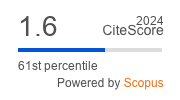Malaysian Journal of Mathematical Sciences, January 2021, Vol. 15, No. 1
Relation Between Sums of Squares and Sums of Centred Pentagonal Numbers Induced by Partitions of 8
Johari, M. A. M., Sapar, S. H., and Zaini, N. A.
Corresponding Email: mamj@upm.edu.my
Received date: 5 January 2020
Accepted date: 30 November 2020
Abstract:
The relation between the number of representations of an integer \(n\) as a sums of squares induced by \(\lambda\), \(s_{\lambda}(n)\) and the number of representations of an integer \(n\) as a sums of centred pentagonal numbers induced by \(\lambda\), \(c_{\lambda}(n)\) is given by \[s_{\lambda}(8n)-s_{\lambda}(2n)=\beta_{\lambda}c_{\lambda}(5n+3)\] for all non-negative integers (n) where \(\beta_{\lambda}=2^{m}+2^{m-1}\left ( \binom{i_1}{4}+\binom{i_1}{2}\binom{i_2}{1}+\binom{i_1}{1}\binom{i_3}{1}
\right )\)for \(i_j\) denote the number of parts of \(\lambda\) which are equal to \(j\) and
\(\lambda=\left ( \lambda_{1},\lambda_{2},...,\lambda_{m}
\right )\) is a partition of 8. This relation is proved for all 22 partitions of 8 by using the generating function method.
Keywords: Number of representations, squares, centred pentagonal numbers









